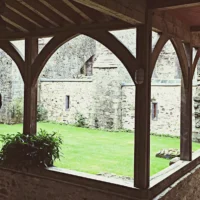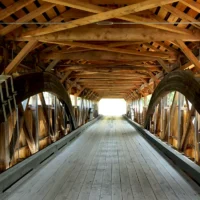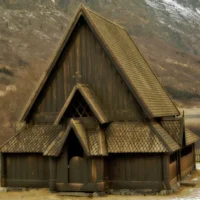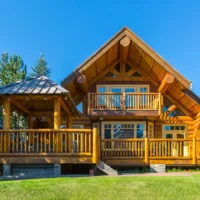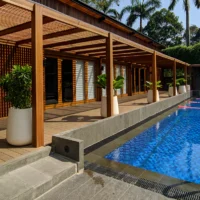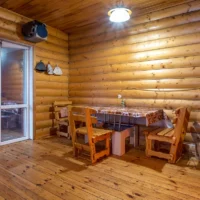Table of Contents
Introduction
Every step of building a custom log homes makes a difference in the outcome. Most decisions fill more than one box of the checklist of needs. For example, you need a roof to keep your custom log homes dry and protected from the elements. However, you also need a roof to keep the logs that make up the house dry and protected. Here are some tips on choosing the correct roof structure for your custom log homes.
Complexity- What Is Complexity Regarding Roofs?
There are three layers or categories of complexity when referring to roof construction. Simple, Intermediate and Complex. Several factors determine which category a roof falls under, including the number and severity of roof obstructions. This includes things like the pitch, how many joints, the number of chimneys and other features that increase the difficulty of the project.
A simple roof is one without pitch changes or valleys, with minimum obstructions like chimneys and a 6:12 or flatter slope. An intermediate complexity roof is steeper than 6:12 which requires being tied-off when roofing, has at least one pitch change, at least one valley and includes a chimney or other obstructions. A roof that would be considered complex would have a steep pitch to the slope, multiple obstructions like chimneys and skylights, multiple valleys and several levels to the roof.
The design you choose needs enough complexity to add the interest and function you desire and considers the build’s difficulty due to location, climate, materials, etc. Some modern log homes use sleek, simple rooflines, while others incorporate more intricate designs for added character.
Cost Of the Roof
The cost of the roof will be determined by the complexity of the installation, the materials used and the location of your project. For example, materials can vary from wood shingles or shakes, tile, asphalt composition to a metal roof or even a thatched roof in some areas.
The materials you choose will determine much of the cost. For example, asphalt shingles are the most common material for roofs and tend to be the least expensive. On the other hand, wood shingles and shakes are a beautiful choice and look terrific on a custom log homes, but they cost more than asphalt and are more susceptible to fire.
There are synthetic materials to mimic wood shakes or even slate roofs to give the aesthetic you want without the cost of natural products. However, many custom log homes owners prefer to stick to natural ingredients, leaving out slate for most homes due to the weight and cost.
Metal roofs are often used for industrial buildings and are growing more popular for homes, especially in high fire danger and heavy snow load areas. Copper is a beautiful but costly metal roof choice. Some large log homes benefit from the durability of metal roofing, especially in areas with heavy snowfall.
Weather Conditions Matter When It Comes to Roof Choices
Your roof should be suited for the climate you live in. For example, asphalt roofs are an excellent choice for humid climates as they can hold humidity. However, they also draw heat, making them good in cold climates. However, concrete tiles and clay tiles might be your best option if you are in a hot, humid climate.
Metal roofs can work well in either hot or cold areas, as is slate and even rubber.
Make sure your roof is designed in such a way that falling snow and ice does not come off the roof and cause bodily harm.
If you live in a cold but dry climate, you can’t beat wood shakes and shingles. They offer beauty, insulation and charm to your custom log homes. Many modern log homes integrate energy-efficient roofing materials for sustainability and cost savings.
Energy Efficiency and Insulation for Your Custom Log Home Roof
Choosing the right roof structure for your custom log home isn’t just about aesthetics and durability—it also impacts your home’s energy efficiency. Proper insulation and ventilation can help regulate indoor temperatures, reducing heating and cooling costs year-round. Consider energy-efficient roofing materials such as metal with reflective coatings, insulated panels, or cool roofing shingles that minimize heat absorption. Additionally, incorporating proper attic ventilation can prevent moisture buildup and improve overall efficiency. Investing in energy-efficient roofing options ensures your log home stays comfortable while lowering energy expenses.
Appearance Of the Roof on Your Custom Log Home
While you are making all the practical choices for your roof, make sure to consider the appearance of your roof. What look does your custom log homes need to complete it, so it meets the expectations of your dream? Consider the pitch (and snow removal), the number of peaks, sunroofs, chimneys or more you desire. Perhaps simple is your most pleasant option.
While making sure your custom log homes has all the amenities and safety features you want and need, at the end of the day, we all look forward to seeing our home at the end of a long day. Make sure the appearance of your custom log homes warms your heart.
Sierra Log & Timber offers a variety of house plans and roof options to create your custom log home. With our custom log homes plans, you are sure to find everything you need for your new custom log homes. Contact us today to set up a consultation.
Conclusion
Choosing the right roof for your custom log home is a balance between functionality, aesthetics, cost, and environmental suitability. From complexity and material choices to energy efficiency and weather resistance, every decision impacts not only the durability of your home but also its comfort and appearance. Whether you prefer a simple, traditional design or a complex, modern style, selecting the right roofing option ensures your log home is both structurally sound and visually stunning for years to come.
FAQ's
1. What is the best roof type for a custom log home?
The best roof depends on your climate, budget, and design preference. Asphalt shingles are affordable, wood shakes add rustic charm, and metal roofs offer durability and fire resistance.
2. How much does it cost to roof a custom log home?
Costs vary based on materials and design complexity. Asphalt shingles are the most economical, while wood shakes, slate, and metal roofs come at a higher price but provide enhanced durability and aesthetics.
3. Are metal roofs good for log homes?
Yes, metal roofs are excellent for log homes, especially in areas with heavy snowfall or high fire risk. They are durable, energy-efficient, and require less maintenance than other options.
4. How do weather conditions affect roof choices?
Climate plays a major role—wood shakes work well in cold, dry climates, while clay or concrete tiles are better for hot, humid regions. Metal and slate roofs can adapt to both hot and cold environments.
5. How can I make my log home roof more energy efficient?
Choose materials with reflective coatings, install proper insulation, and ensure attic ventilation. Energy-efficient roofing can lower heating and cooling costs significantly.
6. Does roof design impact the overall look of a log home?
Yes, the roof’s pitch, peaks, and features like chimneys or skylights greatly influence curb appeal. A well-chosen roof enhances both the character and functionality of your custom log home.



